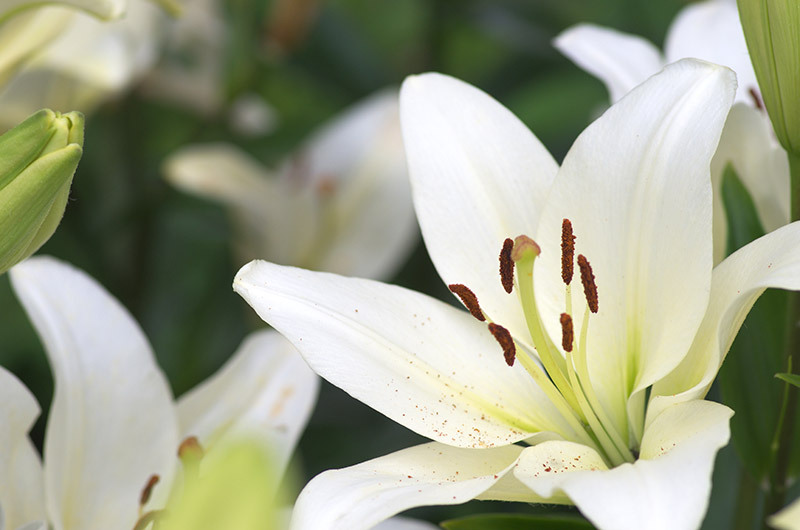The Ultimate Guide to Expert Orchid Care and Maintenance
Posted on 01/07/2025
The Ultimate Guide to Expert Orchid Care and Maintenance
Orchids are among the most captivating and diverse plants in the world, admired for their stunning flowers and intricate growth patterns. Whether you're a beginner or a seasoned gardener, expert orchid care and maintenance can be both rewarding and challenging. In this comprehensive guide, you'll discover everything you need to know to cultivate thriving, beautiful orchids in your home or garden.
- Understanding Orchid Basics
- Popular Types of Orchids
- Creating the Best Environment for Your Orchids
- Watering and Humidity Tips
- Orchid Lighting Requirements
- Fertilization and Nutrition
- Repotting and Pot Selection
- Common Orchid Problems and Expert Solutions
- Encouraging Orchids to Bloom
- Seasonal Orchid Care
- Frequently Asked Questions about Orchid Maintenance
Understanding Orchid Basics
Orchids are revered for their striking beauty, but their care demands a unique approach. Unlike many houseplants, they have distinct requirements for water, light, and nutrition. Before mastering expert orchid maintenance, it's crucial to learn the fundamentals of how these plants grow and thrive.
The Anatomy of an Orchid
- Roots: Most orchids have aerial roots that absorb moisture and nutrients from the air.
- Leaves: The leaves are thick and waxy, designed to minimize moisture loss.
- Stems: Orchids often produce flower spikes from their stems or pseudobulbs.
- Flowers: Orchid blooms are long-lasting and come in almost every color of the rainbow.
Having a firm understanding of your plant's basic structure enables you to provide optimal orchid care at every stage of growth.
Popular Types of Orchids
There are over 25,000 orchid species and more than 100,000 hybrids. However, a few types are particularly popular with home gardeners due to their resilience and beauty.
Phalaenopsis (Moth Orchid)
- Best for beginners
- Long-lasting blooms and straightforward care routines
- Adapts well to home environments
Cattleya (Corsage Orchids)
- Famous for large, fragrant flowers
- Requires bright light and good air circulation
Dendrobium
- Massive variety in colors and forms
- Some types need a rest period during winter
Oncidium (Dancing Lady)
- Known for their delicate, fluttery blooms
- Thrive in bright, indirect sunlight
Understanding the type of orchid you own is vital for tailoring your orchid care techniques to its specific needs.
Creating the Best Environment for Your Orchids
The right environment is fundamental for successful orchid maintenance. Orchids hail from diverse climates, but most commonly grow in tropical areas with warm temperatures and high humidity.
Temperature and Humidity Control
- Daytime temperatures: 65?F to 80?F (18?C to 27?C)
- Nighttime temperatures: 55?F to 65?F (12?C to 18?C)
- Humidity: Ideal range is 40%-70%
Increase humidity by using trays of water, humidifiers, or misting the plants regularly. Always ensure good air circulation to prevent fungal diseases.
Choosing the Right Location
- Place orchids near east- or south-facing windows for optimal light
- Avoid direct, harsh midday sun which can scorch leaves
- Do not place orchids near cold drafts or heat sources
Watering and Humidity Tips
Overwatering is the number one orchid killer. Knowing when and how to water is crucial for expert orchid care.
How Often Should You Water Orchids?
- Water once weekly for most varieties, but check the growing medium before watering
- Allow the potting medium to dry out slightly between waterings
- Increased watering may be necessary during hot or dry periods
Tip: Use tepid, distilled, or rainwater, and avoid letting water sit in the crown of the plant to prevent rot.
Humidity Management for Healthy Orchids
- Place pots on pebble trays filled with water
- Group orchids together to raise humidity naturally
- Avoid misting late in the day to prevent fungal problems overnight
Orchid Lighting Requirements
Light is critical for expert orchid growth and maintenance. Insufficient light can prevent flowering, while too much causes leaf burn.
Signs Your Orchid is Getting the Right Light
- Healthy, bright green leaves indicate correct light levels
- Dark green leaves suggest it needs more light
- Yellowing or red-tinged leaves may mean it's getting too much exposure
Supplemental Lighting Options
- Use LED grow lights if natural sunlight is insufficient
- Position artificial lights 6-12 inches above the plant
- Provide 12-16 hours of light per day during winter or in low-light environments
Fertilization and Nutrition
Proper feeding is an integral part of orchid care and maintenance. Orchids have low nutrient needs, but they still benefit from regular fertilization.
Best Orchid Fertilizer Practices
- Use a balanced, water-soluble fertilizer (20-20-20 or similar)
- Fertilize at one-quarter to half the strength recommended on the package
- Feed every 2-4 weeks during active growth (spring/summer)
- Reduce or eliminate fertilization during the plant's dormant period (fall/winter)
Remember: "Weakly, weekly" is the motto for fertilizing orchids.
Repotting and Pot Selection
Periodic repotting is a key component of orchid maintenance. Over time, the potting medium breaks down and can suffocate the roots. Repot every 18-24 months, or when you notice decomposed media, tangled roots, or a decline in plant health.
How to Repot Orchids Like an Expert
- Choose the right time: After blooming, in spring or early summer
- Gently remove the plant and shake off old media
- Trim away any rotten, mushy, or dead roots
- Place the orchid in a pot slightly larger than the root mass
- Use a specialized orchid mix, such as bark, sphagnum moss, or coconut husk
- Water lightly to settle the media and reduce transplant shock
Opt for pots with plenty of drainage holes to avoid root rot--a common issue in poor containers.
Common Orchid Problems and Expert Solutions
Even with perfect orchid care, problems may arise. Identifying and addressing issues early is vital to maintaining healthy plants.
Disease and Pest Troubleshooting
- Root rot: Caused by overwatering or poor drainage. Repot immediately and prune damaged roots.
- Leaf spots and fungal infections: Remove affected leaves and apply a fungicide. Increase air circulation.
- Pests (mealybugs, scale, aphids): Use insecticidal soap, neem oil, or wipe leaves with alcohol-soaked cotton swabs.
Other Common Issues
- No blooms: Often due to insufficient light or improper temperature swings
- Wrinkled leaves: May indicate underwatering or root damage
- Yellow leaves: Can result from too much direct sun, old age, or nutritional deficiencies
Encouraging Orchids to Bloom
Unlock the secret of breathtaking blooms with these expert orchid care tips:
- Provide bright, indirect light to stimulate flowering
- Introduce a nighttime temperature drop (about 10?F lower than daytime) to encourage spike formation
- Maintain a light feeding schedule during the growing season
- Avoid moving your orchid after a flower spike emerges, as this can cause bud drop
Patience is key. Some orchids only bloom once a year and may take several months to rebloom after shedding their flowers.
Seasonal Orchid Care
Orchids have different needs throughout the year. Adjust your orchid maintenance routine with the seasons for best results.
Spring and Summer
- Increase watering and feeding
- Watch for pests and fungus as humidity rises
- Provide more light as days lengthen
Fall and Winter
- Reduce watering and feeding as growth slows
- Ensure sufficent humidity indoors as heating systems run
- Maximize light exposure to combat winter gloom
Frequently Asked Questions about Orchid Maintenance
Q: How do I know if my orchid needs repotting?
A: Look for signs like crowded roots, decomposed potting material, or roots growing out of the pot's drainage holes.
Q: My orchid has lost all its flowers, is it dying?
A: Not at all! Most orchids naturally lose their blooms after a few weeks or months. With proper orchid care, your plant should rebloom next season.
Q: Can I grow orchids outdoors?
A: In warm, humid climates, certain orchids can thrive outdoors. In temperate zones, bring them inside when temperatures drop below 55?F (12?C).
Q: How long do orchid flowers last?
A: Depending on the type, orchid blooms can last from a few weeks to several months with correct orchid care and maintenance.
Conclusion: Achieving Expert Orchid Care and Maintenance
Orchid care doesn't have to be intimidating. By understanding your plant's unique requirements--in watering, lighting, feeding, and repotting--you can keep your orchids thriving year after year. Whether you're growing the popular Phalaenopsis or experimenting with exotic hybrids, this ultimate guide to expert orchid care and maintenance will help you cultivate lush, vibrant, and beautifully blooming plants.
With patience, observation, and a bit of expert knowledge, your orchids can reward you with dazzling displays that enrich your home and bring joy for seasons to come. Happy growing!







